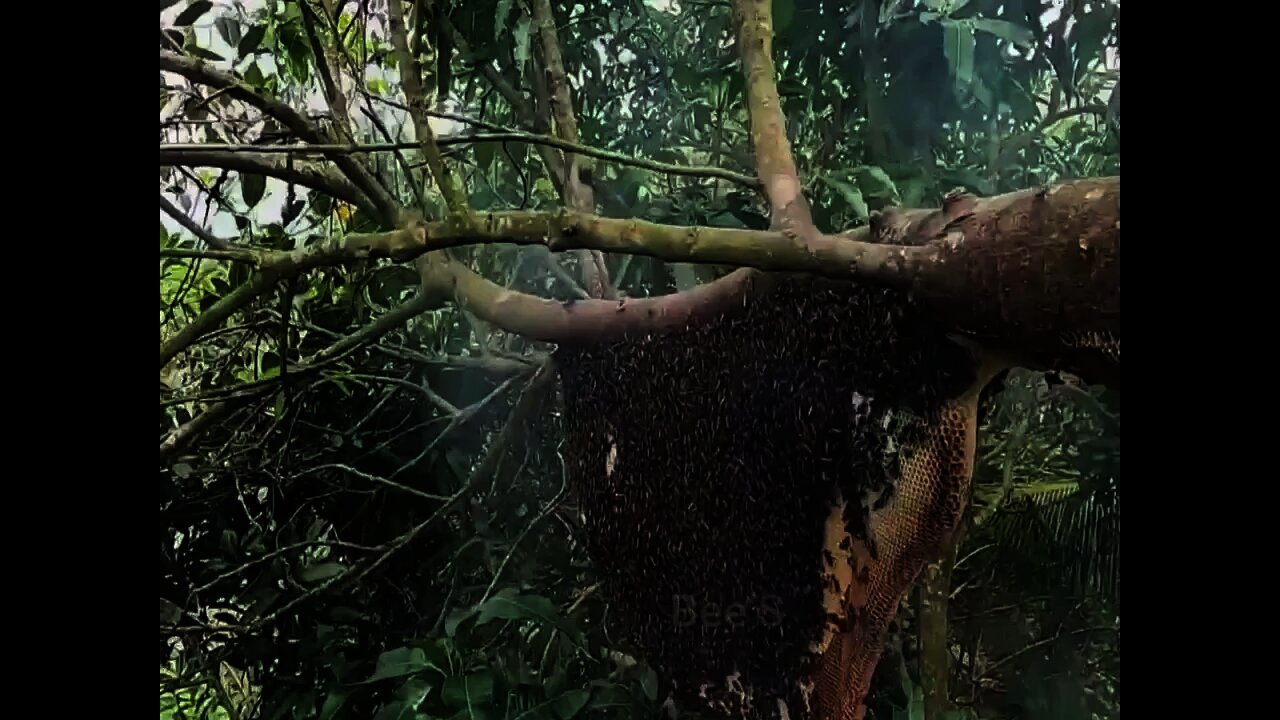Premium Only Content

Honey from the comb
Comb honey is honey intended for consumption by humans, which is still contained within its original hexagonal-shaped beeswax cells, called honeycomb. It has received no processing, filtering, or manipulation, and is in the state that honey bees have produced it.
Comb honey production using Ross Round style equipment: center comb is complete, right in progress
Before the invention of the honey extractor almost all honey produced was in the form of comb honey. Today, most honey is produced for extraction but comb honey remains popular among consumers both for eating 'as is' and for combining with extracted honey to make chunk honey. Hobbyists and sideliners can develop their beekeeping skills by producing comb honey, which takes more rigorous attention to beekeeping than the production of extracted honey. Because of the more demanding labor involved, comb honey has greater retail value than extracted honey. ($17/pound compared to $6.50/pound US).Comb honey production is more suitable for areas with an intense prolonged honeyflow from eucalyptus, alfalfa, alsike, and yellow clover. Wooded areas are not as suitable for comb honey production, as bees tend to collect more propolis, making the harvesting of comb honey more difficult. This problem has been largely circumvented with the adoption of specialized frames, such as the Ross Round frame, which prevent accumulation of propolis on saleable units.
-
 3:17:28
3:17:28
TimcastIRL
4 hours agoTrans Shooter Targets Catholic Kids In Mass Shooting, Leftists Reject Prayers | Timcast IRL
196K46 -
 1:31:29
1:31:29
Brandon Gentile
1 day ago25 Year Wall Street INSIDER: $1M Bitcoin Soon Is Just The START
3.08K -
 LIVE
LIVE
SpartakusLIVE
5 hours ago#1 Birthday Boy Celebrates with MASSIVE and HUGE 4.8-Hour Stream
339 watching -
 55:54
55:54
Man in America
7 hours agoFrom Oil Barons to Pill Pushers: The Rockefeller War on Health w/ Jeff Adam
20.1K1 -
 3:02:18
3:02:18
Barry Cunningham
4 hours agoBREAKING NEWS: PRESIDENT TRUMP THIS INSANITY MUST END NOW!
71.7K128 -
 LIVE
LIVE
StevieTLIVE
3 hours agoWednesday Warzone Solo HYPE #1 Mullet on Rumble
168 watching -
 5:58
5:58
Mrgunsngear
4 hours ago $0.82 earnedBreaking: The New Republican Party Chairman Is Anti 2nd Amendment
13.8K5 -
 2:28:35
2:28:35
Geeks + Gamers
4 hours agoGeeks+Gamers Play- MARIO KART WORLD
18.6K -
![(8/27/2025) | SG Sits Down Again w/ Sam Anthony of [Your]News: Progress Reports on Securing "We The People" Citizen Journalism](https://1a-1791.com/video/fww1/d1/s8/6/G/L/3/c/GL3cz.0kob.1.jpg) 29:34
29:34
QNewsPatriot
4 hours ago(8/27/2025) | SG Sits Down Again w/ Sam Anthony of [Your]News: Progress Reports on Securing "We The People" Citizen Journalism
14.3K2 -
 25:12
25:12
Jasmin Laine
9 hours agoDanielle Smith’s EPIC Mic Drop Fact Check Leaves Crowd FROZEN—Poilievre FINISHES the Job
19.3K20